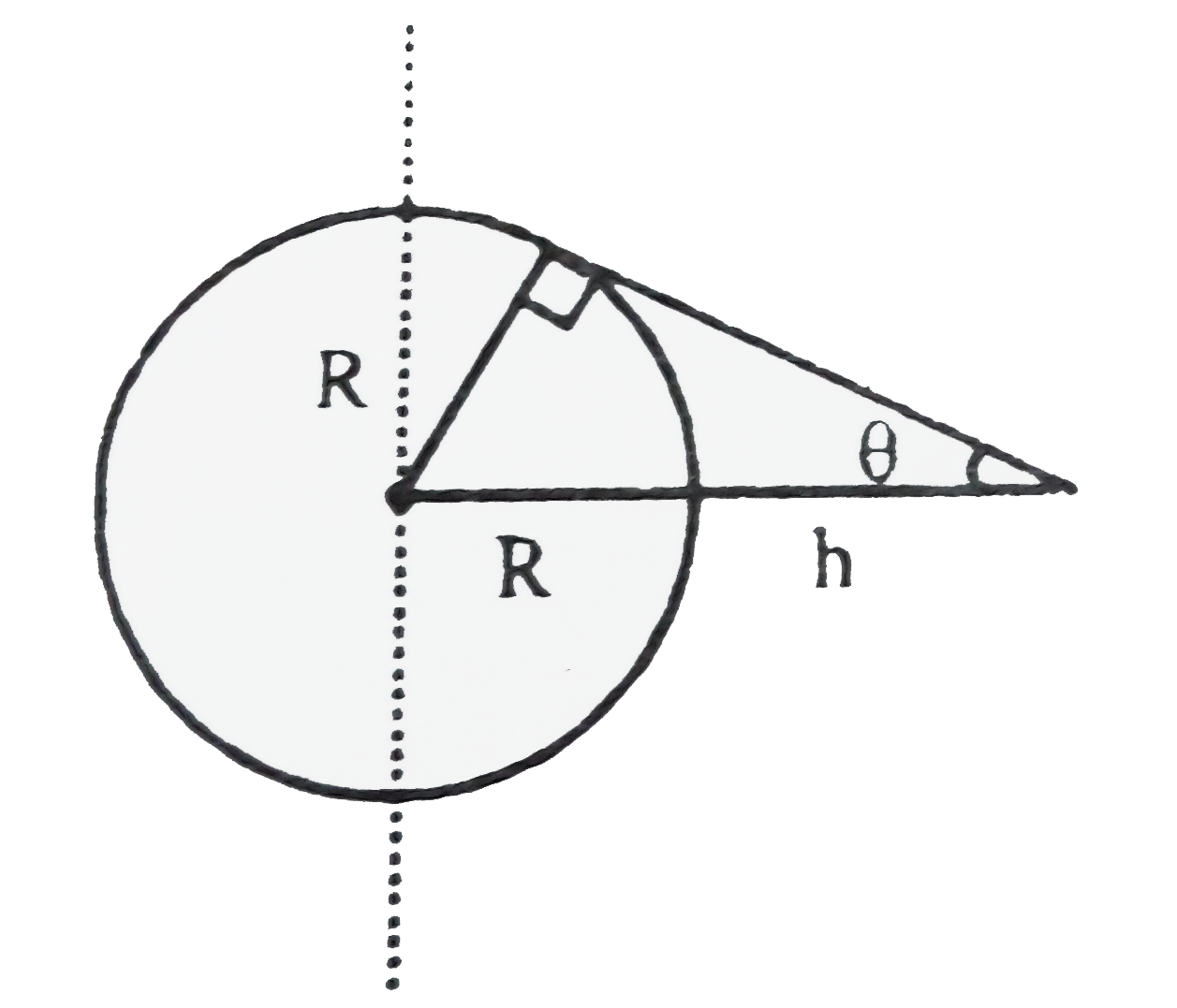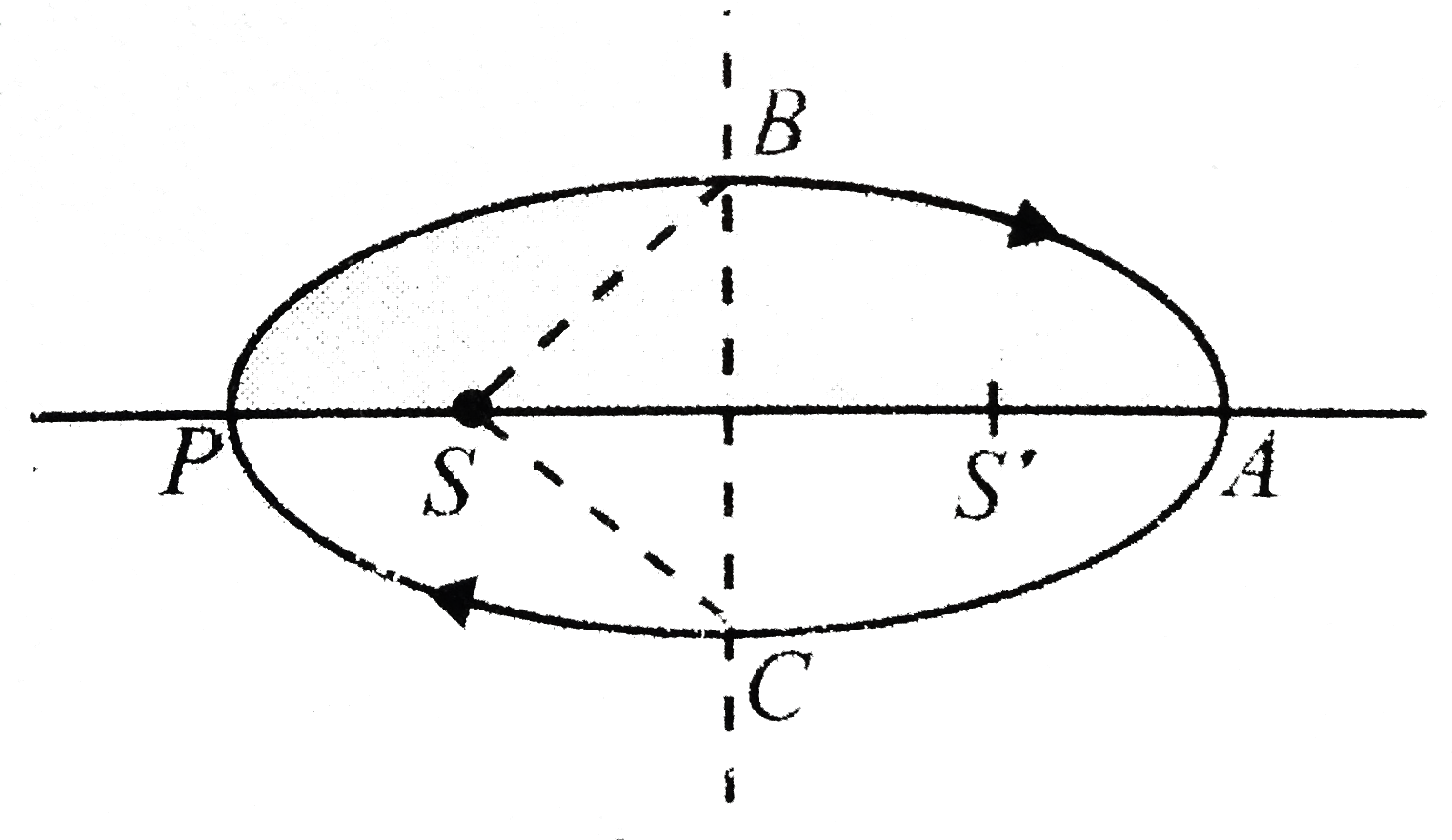Example from DHANPAT RAI & CO PHYSICS Chapter 3 GRAVITATION for Class 11
| Class 11 | PHYSICS |
| Chapter | GRAVITATION |
| DHANPAT RAI & CO PHYSICS | Example |
| Medium | English |
| Academic Year | 2023-2024 |
Question 4
The mass of planet Jupiter is 1.9×107kg and that of the Sun is 1.9x1030kg. The mean distance of Jupiter from the Sun is 7.8×1011m. Calculate te gravitational force which Sun exerts on Jupiter. Assuming that Jupiter moves in circular orbit around the Sun, also calculate the speed of Jupiter G=6.67×10−11Nm2kg−2.View SolutionQuestion 11
In an experiment using the Cavendish balance, the smaller spheres have a mass of 5.0×10−3kg each, the larger spheres have a mass 12.0 kg each, the length of the rod is 100.0 cm, the torsion constant of the fibre is 3.56×10−8 Nm per rad, the angle of twist is 4.86×10−3rad, and the distance between the centres of each pair of heavy and light spheres is 15.0 cm. Compute the value of the gravitational constant G from this data.View SolutionQuestion 17
Two lead spheres of 20cm and 2cm diametre respectively are planet with centres 100cm apart. Calculate the attraction between them, given the radius of the Earth as 6.37×108cm and its mean density as 5.53×103kgm−3. Speciffic gravity of lead =11.5. If the lead spheres are replaced by bress sphere of the same radii, would the force of attraction be the same?View SolutionQuestion 18
Compares the gravitational acceleration of the eartrh due to attraction of the sun with that due to attraction of the moon. Given that mass of sun,Ms=1.99×1030kg, mass of moon,Mm=7.35×1022kg , distance of sun from earth ,res=1.49×1011 m and the distance moon from earthrem=3.84×108m.View SolutionQuestion 36
Imagine a tunnel dug along a diameter of the earth. Show that a particle dropped from one end of the tunnel executes simple harmonic motion. What is the time period of this motion? Assume the earth to be a sphere of uniform mass density (equal to its known average density=5520 kg m−3.)G=6.67×10−11Nm2kg−2.Neglect all damping forces.View SolutionQuestion 41
A remote sensing satellite of the earth revolves in a circular orbit at a height of 250 km above the earth's surface. What is the (i) orbital speed and (ii) period of revolution of the satellite ? Radius of the earth, R=6.38×106 m, and acceleration due to gravity on the surface of the earth, g=9.8ms−2.View SolutionQuestion 57
In an imaginary planetary system, the central star has the same mass as our sun, but is brighter so that only a planet twice the distance between the earth and the sun can support life. Assuming biological evolution (inculuding aging process etc.) on that planet similar to ours, what would be the average life span of a 'human' on that planet in terms of its natural year ? The average life span of a human on the earth may be taken ot be 70 years.View SolutionQuestion 69
A satellite orbits the earth at a height of 500 km from its surface. Compute its (i) Kinetic energy, (ii) potential energy, and (iii) total energy. Mass of the satellite=300 kg, Mass of the earth=6.0×1024kg, radius of the earth=6.4×106m, G=6.67×10−11Nm2Kg−2. Will your answer alter if the earth were to shrink suddenly to half its size?View SolutionQuestion 70
A satellite orbits the earth at a height of 400 km, above the surface. How much energy must be expended to rocket the satellite out of the earth's gravitational influence ? Mass of the satellite=200 kg, mass of the earth=6.0×1024kg, radius of the earth=6.4×10(6)m, G=6.67×10−11Nm2Kg−2.View SolutionQuestion 71
A spaceship is stationed on Mars. How much energy must be expended on the spacesship to rocket it out of the solar system ? Mass of the spaceship 1000 kg, mass of the sun=2×1030kg, mass of Mars=6.4×1023kg, radius of Mars 3395 km, radius of the orbit of Mars =2.28×108Km, G=6.67×10−11Nm2Kg−2.View SolutionQuestion 73
A rocket is fired fired vertically from the surface of Mars with a speed of 2 Kms−1. If 20% of its initial energy is lost due to martain atmospheric resistance, how far will the rocket go from the surface of Mars before returning to it ? Mass of Mars=6.4×1023Kg, radius of Mars=3395 Km, G=6.67×10−11Nm2Kg−2.View SolutionQuestion 90
The mass of planet Jupiter is 1.9×107kg and that of the Sun is 1.9x1030kg. The mean distance of Jupiter from the Sun is 7.8×1011m. Calculate te gravitational force which Sun exerts on Jupiter. Assuming that Jupiter moves in circular orbit around the Sun, also calculate the speed of Jupiter G=6.67×10−11Nm2kg−2.View SolutionQuestion 101
Two lead spheres of 20cm and 2cm diametre respectively are planet with centres 100cm apart. Calculate the attraction between them, given the radius of the Earth as 6.37×108cm and its mean density as 5.53×103kgm−3. Speciffic gravity of lead =11.5. If the lead spheres are replaced by bress sphere of the same radii, would the force of attraction be the same?View SolutionQuestion 102
Compares the gravitational acceleration of the eartrh due to attraction of the sun with that due to attraction of the moon. Given that mass of sun,Ms=1.99×1030kg, mass of moon,Mm=7.35×1022kg , distance of sun from earth ,res=1.49×1011 m and the distance moon from earthrem=3.84×108m.View SolutionQuestion 119
Imagine a tunnel dug along a diameter of the earth. Show that a particle dropped from one end of the tunnel executes simple harmonic motion. What is the time period of this motion? Assume the earth to be a sphere of uniform mass density (equal to its known average density=5520 kg m−3.)G=6.67×10−11Nm2kg−2.Neglect all damping forces.View SolutionQuestion 147
A block hole is a body from whose surface nothing may even escape. What is the condition for a uniform spherical body of mass M to be a block hole? What should be the radius of such a black hole if its mass is nine times the mass of the earth?
Mass of earth =6×1024kg,
G=6.61×10−11Nm2kg−2.View SolutionQuestion 159
A remote sensing satellite of the earth revolves in a circular orbit at a height of 250 km above the earth's surface. What is the (i) orbital speed and (ii) period of revolution of the satellite ? Radius of the earth, R=6.38×106 m, and acceleration due to gravity on the surface of the earth, g=9.8ms−2.View SolutionQuestion 160
A remote sensing satellite of the earth revolves in a circular orbit at a height of 250 km above the earth's surface. What is the (i) orbital speed and (ii) period of revolution of the satellite ? Radius of the earth, R=6.38×106 m, and acceleration due to gravity on the surface of the earth, g=9.8ms−2.View SolutionQuestion 165
In a two stage launch of a satllite, the first stage bringe the satlilte to a height of 500km and the second stage given it the necessary critical speed to put it in circular orbit around the Earth. Which stage requires more expenditude of fuel?
(Neglect damping due to air resistance, especially in the first stage).
Mass of the Earth =6.0×1024kg,radius of Earth =6400km,G=6.67×10−11Nm2kg−2.View SolutionQuestion 174
A satellite orbits the earth at a height of 500 km from its surface. Compute its (i) Kinetic energy, (ii) potential energy, and (iii) total energy. Mass of the satellite=300 kg, Mass of the earth=6.0×1024kg, radius of the earth=6.4×106m, G=6.67×10−11Nm2Kg−2. Will your answer alter if the earth were to shrink suddenly to half its size?View SolutionQuestion 184
In an imaginary planetary system, the central star has the same mass as our sun, but is brighter so that only a planet twice the distance between the earth and the sun can support life. Assuming biological evolution (inculuding aging process etc.) on that planet similar to ours, what would be the average life span of a 'human' on that planet in terms of its natural year ? The average life span of a human on the earth may be taken ot be 70 years.View SolutionQuestion 185
The planet Mars has two moons. Phobos and Delmos (i) phobos has period 7 hours, 39 minutes and an orbital radius of 9.4×103km. Calculate the mass of Mars. (ii) Assume that Earth and mars move in a circular orbit around the sun, with the martian orbit being 1.52 times the orbital radius of the Earth. What is the length of the martian year in days? (G=6.67×10−11Nm2kg−2)View SolutionQuestion 243
The gravitational force exerted by the Sun on the Moon is about twice as great as the gravitational force exerted by the earth on the Moon, but still Moon is not escaping from the gravitational influence of the earth. Mark the option which correctly explains the above system. View SolutionQuestion 261
Assertion: The artifical satellite does not have any fuel but even then it remains orbiting around the earth.
Reason: The necessary centripetal force required to move the satellite in an ·orbit around the earth is provided by the gravitational force of attraction between the satellite and the earth.View SolutionQuestion 265
Choose the correct alternative :
(a) If the gravitational potential energy of two mass points infinite distance away is taken to be zero, the gravitational potential energy of a galaxy is (positive /negative/zero).
(b) The universe on the large is shaped by (gravitational/electromagentic) forces, on the atomic scale by (gravitational/electromagnetic) forces, on the nuclear scale by (gravitational/electromagnetic/strongnuclear) forces.View SolutionQuestion 266
Choose the correct alternative :
(a) If the gravitational potential energy of two mass points infinite distance away is taken to be zero, the gravitational potential energy of a galaxy is (positive /negative/zero).
(b) The universe on the large is shaped by (gravitational/electromagentic) forces, on the atomic scale by (gravitational/electromagnetic) forces, on the nuclear scale by (gravitational/electromagnetic/strongnuclear) forces.View SolutionQuestion 294
Let us consider that our galaxy consists of 2.5×1011 stars each of one solar mass. How long will this star at a distance of 50,000 light year from the galastic entre take to complete one revolution? Take the diameter of the Milky way to be 105ly.G=6.67×10−11Nm2Kg−2.(1ly=9.46×1015m)View SolutionQuestion 300
A comet orbits the Sun in a highly elliptical orbit. Does the comet have a constant (a) linear speed (b) angular speed (c) angular momentum (d) kinetic energy (e) potential energy (f) total energy throughout its orbit? Neglect any mass loss of the comet when it comes very close to the Sun.View SolutionQuestion 311
A satellite orbits the earth at a height of 400 km, above the surface. How much energy must be expended to rocket the satellite out of the earth's gravitational influence ? Mass of the satellite=200 kg, mass of the earth=6.0×1024kg, radius of the earth=6.4×10(6)m, G=6.67×10−11Nm2Kg−2.View SolutionQuestion 312
Two starts each of one solar mass (=2×1030kg) are approaching each other for a head on collision. When they are a distance 109km. their speeds are negligible. What is the speed with which they collide? The radius of each star is 104km. Assume the stars to remain undistorted until they collide. (Use the known value of G). View SolutionQuestion 316
A spaceship is stationed on Mars. How much energy must be expended on the spacesship to rocket it out of the solar system ? Mass of the spaceship 1000 kg, mass of the sun=2×1030kg, mass of Mars=6.4×1023kg, radius of Mars 3395 km, radius of the orbit of Mars =2.28×108Km, G=6.67×10−11Nm2Kg−2.View SolutionQuestion 317
A rocket is fired vertically from the surface of Mars with a speed of 2kms−1. If 20% of its initial energy is lost due to Martian atmospheric resistance, how far will the rocket go from the surface of Mars before returning to it? Mass of Mars =6.4×1023kg, radius of Mars =3395km,View Solution
All Exercises from DHANPAT RAI & CO PHYSICS Class 11 PHYSICS GRAVITATION
- Based on Acceleration due to gravity
- Based on Variation of g with Altitude
- Based on Variation of g with Depth
- Based on Variation of g with Rotation of the earth
- Example
- Exercise
- G :Based on Orbital Velocity of Satellites
- H: Based on Escape Velocity
- I: Based on Kepler s Law of Periods
- J: Based on Gravitational Intensity, Potential and Potential Energy
- Problem From Competitive Examinations
- m

_S01_003_Q01.png)





